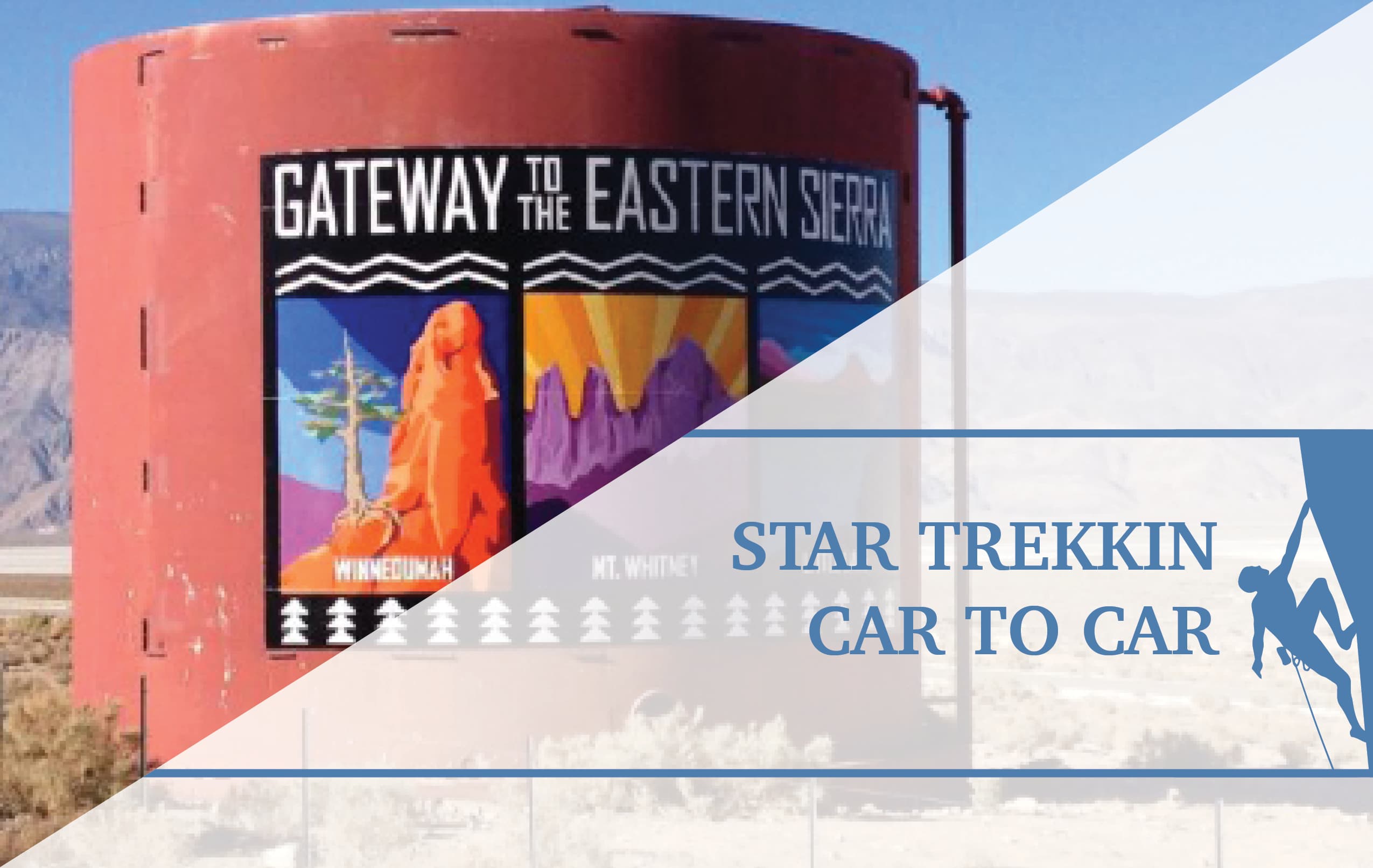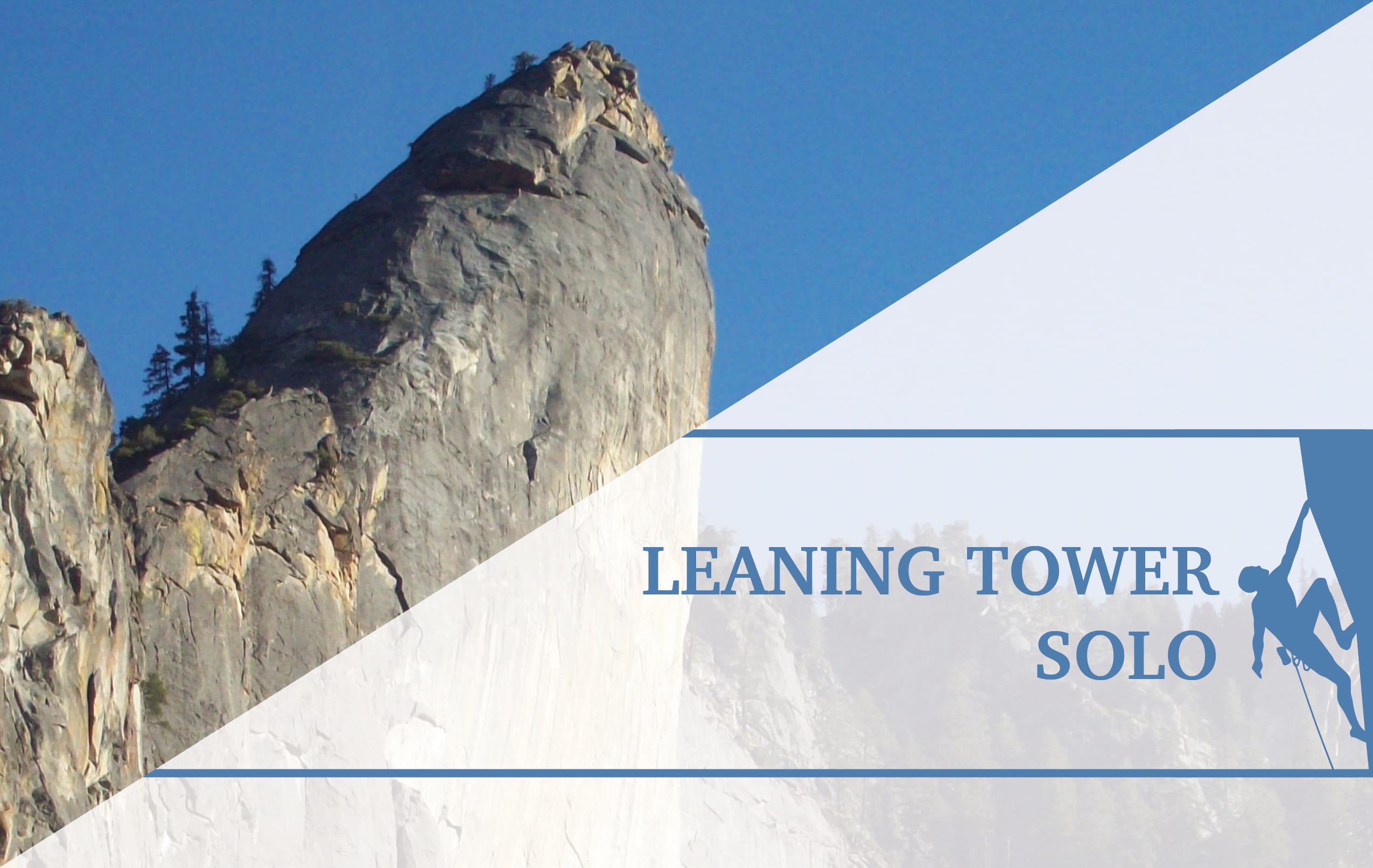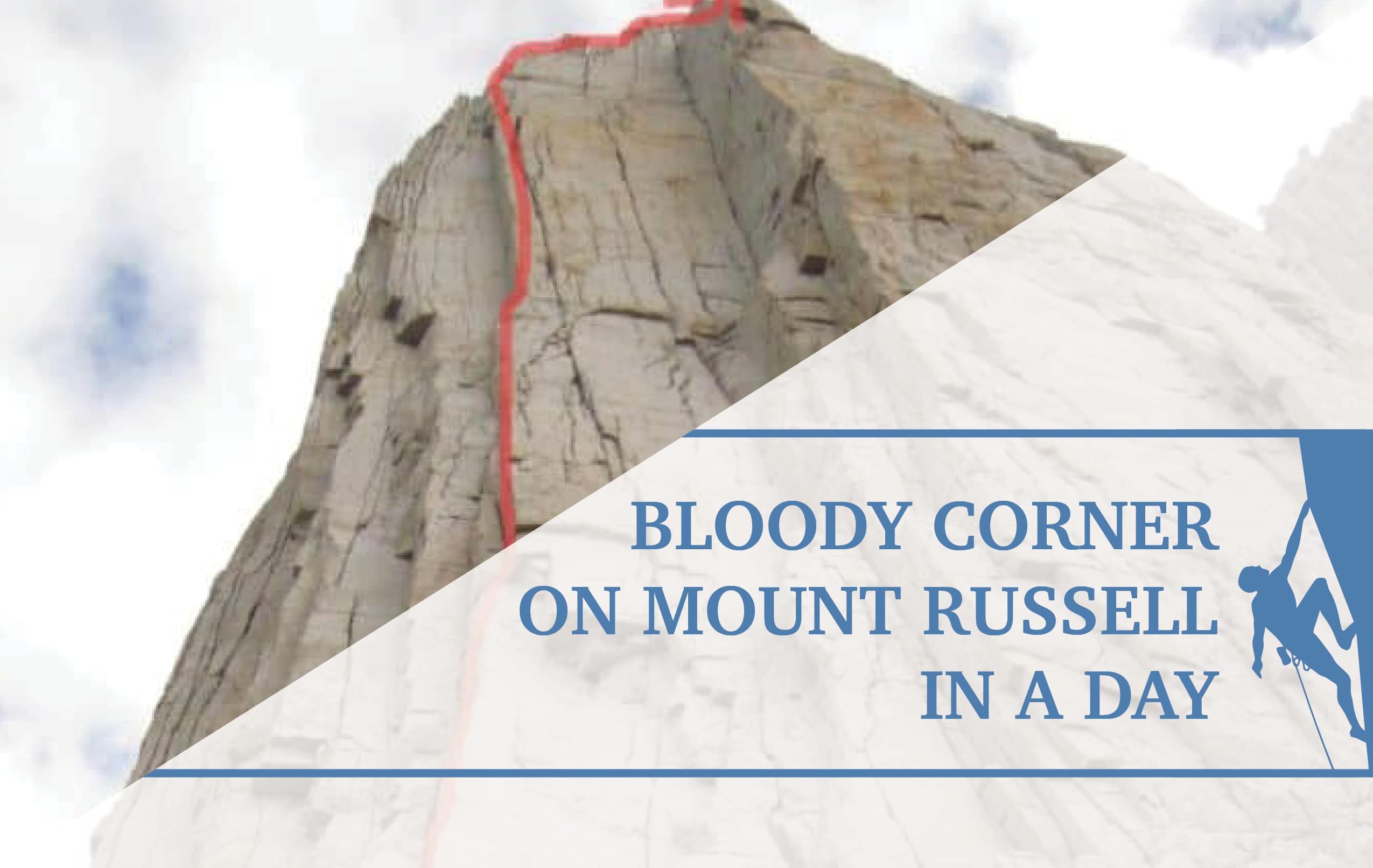Aconcagua Polish Direct

| I am lying in my cocoon high on mount Aconcagua. it is snowing, minus 40 degrees outside and 100km winds are thrashing the tent. We have spent 10 days climbing the mountain but have to turn back because of weather. I should be disappointed but instead i smile slyly to myself. I realize in that moment that i don’t climb mountains for the summit but for the experience…and the stories that follow |
Here is my story of the trip.
—
Day 1: Pentitentes to Pampa de Lenas
Tony and I arrived at Pentitentes at 10am and weighed our duffle bags and cooler. They were exactly 90kg (including four bottles of wine and lots of fruit courtesy of the Sheraton buffet). We just made the weight cut off and the total cost for two mules was $425. It takes three days typically to get to the base of the mountain and most people choose to pack the majority of their weight on mules during this process. It saves energy and allows you to bring luxuries you usually wouldn’t think of in the backcountry. We paid our money and were dropped off at the trailhead. We checked in with our permits, snapped some photos then left stating at 11:30am.

The map

Weighing Bags

Leaving for the trailhead

Loading the mule

At the park entrance
The hiking as scenic and flat. We saw our mules zip by us with their gouchos on horseback controlling the pack. We arrived at Pampa de Lenas camp 3hrs and 15 minutes later at 2:45pm and set up shop. The camp was plush with running water, a toilet and good tent sites.

Mules on the trail

Tony on the trail

Arrival at Pampa De Lenas
There are many guided groups on the mountain who choose to climb the false polish route. Although it is known as a high altitude glorified scree slog, it can still become dangerous because of high winds and freezing temperatures. Our route of choice was the direct polish route which requires upto 65 degrees of ice climbing and some additional technical skills. So it was quite the contrast comparing Tony and My skill-sets and experience to the guided clients. Many of the guided members hadn’t seen snow and it was their first Mountain that they were climbing – which is scary. At first I was skeptical of this, but over time they won me over and their kindness and company is what made climbing the mountain such a memberable experience. We called the two guided groups the Ayamara and Australian teams. Their photos are below (photos were taken a couple days later)
Ayamara Group(Left to Right): Naiko, Pablo, Arden, Lei, Franchesco, Scott






Australian Group(Left to Right): Carlos, Mariana, Alex, Nathan, Tom, Ben, Mat, Dan










Day 2: Pampa de Lenas to Casa De Piedra
We woke up around 8am and were off hiking at 9:20am to Casa De Piedra. A few minutes from camp, there is a bridge crossing, then a bit of uphill, followed by rolling flatlands following the Vacas River covering 11 miles and upto 10,600 feet. It was here, 500 meters before camp, that we had our first glimpse of Aconcagua and the route that we were set to climb. We snapped some photos and made it to Casa De Piedra in 3hrs and 40 minutes – we were cruising.

Photo Courtesy of Tony

Bridge Crossing

En route

Casa De Piedra

First view of the mountain

A look at our route
We setup our tent in camp and mingled with the guided groups. We heard horror stories of people coming down the mountain. 150km winds, blown up tents, ripped poles, people blown in their tents onto the scree hills and just utter chaos. It was a subtle reminder of dangerous the mountain could be. Here we were sitting in comfortable weather, sipping wine and eating fine food – when just a few hours up the hill into base camp people were suffering severely on the mountain. It is a strange feeling. I tucked away in the information in my head unaware that this was foreshadowing of events to come. For the time being all we could do is just wait and find out for ourselves.

Casa De Peidra Camp

Some vino please
Day 3: Casa De Piedra to Plaza Argentina
We left Casa De Piedra around 8:45am and arrived a few minutes later at the notorious Vacas River Crossing. There were two options to cross the river. You could tip out the mule driver and cross on horse back, or you could brave out the bone chilling cold and cross barefoot. Tony and I chose to walk. The water was deathly freezing but I chose to make my “I’m a tough guy face” and braved trough it.

River Crossing the cool way

River crossing the lame way
After the river crossing, the valley weaved up 3,200 more feet to the base of Plaza Argentina, which would be our basecamp for the remainder of the trip. I was expecting a shit show when I arrived but there were only 10 other climbers total when we arrived. The rest of the parties had been stormed off the mountain and retreated. This was a treat, considering usually in high season there would be upto 100 climbers. This is the benefit of climbing in mid season – less crowds.

Winding our way up

Some more crossings



Getting close

We are there
Tony and I were offered some lemonade from the head cook Griselda at the Grajeles tent. We then set up our tents and became aquainted with our neighbors. There was the german group consisting of Ben and Felix and there was the Washington state couple of Curt and Maribel. Ben and Felix epitomized German efficiency. They had a pulse oximiter that would measure their pulse and oxygen saturation each morning, they would then compute additional facts as headache and urine loss and graph them all on a chart each morning depicting their altitude status. They did this every morning for the entire trip and even measured their urine output in a pee bottle each night. Curt and Maribel were a married couple from Washington state that were both retired. They were super bad ass and had traveled the world together climbing mountains, kayaking and having crazy adventures. They were truly inspirational. Little did we know that by the end of the trip we would become such great friends and share so many experiences together.
Ben and Felix(missing a photo of ben):
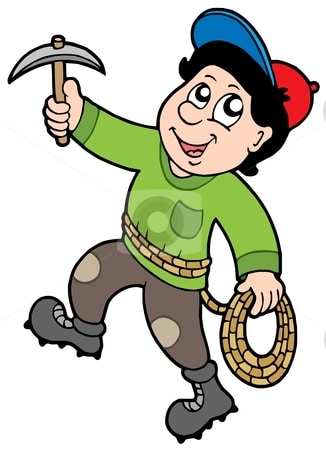

Curtis and Maribel:


I activated my Spot transceiver to let my loved ones know how I was doing, staked down my tent with heavy rocks, had some lunch, took a look around the base camp, watched someone get med evacuated for altitude sickness by helicopter and had some dinner with wine. The camp itself was super plush. There were pit toilets, a camp ranger hut, a medical staff hut,running water from a hose, food tents at a fee per service and well protected campsites.

Our tents at basecamp

Securing my tent

Messy tent

Lunch time

Pit Poopers

Where the waiste goes…then taken by chopper

Plush Basecamp Food Tents for Expeditions

The ausies inside a tent

Some getting evacuated for altitude

See ya helicopter

Vino Time
Day 4: Plaza Argentina to Camp 1 (first load carry)
I woke up this morning at 7am with the loud buzz of the chopper. I wondered if it was another helicopter evacuation, but it turned out that it was routine waste removal from the toilets.

Morning waste pickup
Tony and I made our way to the doctor hut for our mandatory checkup and we met Pablo. He checked our oxygen saturation, vitals and respiration. Tony had 120/80, 95 02 sat and a resting hr of 60. I had 120/80, 90 02 sat and a resting hr of 76. Tony values were abnormally good for the first day at high altitude camp and mine were above average; so we decided that instead of resting that we should do a load carry to camp 1.

Packing up

Basecamp
We made it to camp in 2hrs and 20 minutes with moderate weighted packs. Normal guide pace is 4-6 hours. It was at this point that we knew we were crushing and both felt really fit and optimistic.

Hike to Camp 1

Arriving at camp 1- wind damaged flag – photo courtesy of Tony

Camp 1

Feeling good
When I got back to camp I took a cold water shower from the hose and dried off. A few hours later, tony took a lukewarm water shower from his hydration pack and we settled in for the night feeling tired but great.

Shower Time
Day 5: plaza Argentina to Camp 1(load carry number 2)
We hiked some heavier loads to camp 1 today. I was a little tired from five straight days of hiking, but managed to get to camp 1 in 2hrs and 40 minutes. I later borrowed the 02 saturation machine from Arden and my reading were 75 02 sat and 110 hr. My oxygen was a little low and my hr was a little high. Although I was tired, I instantly felt better when I saw the condition of the other groups. When Franchesco arrived to camp from the Ayamara group, he collapsed to the ground and had trouble breathing or eating. Turned out he had to get helicopter evacuated the next day; bummer.

Ready to Roll

Pentitentes – Photo Courtesy of Tony

On the trail

A New flag planted after the other one was shredded by wind

Hanging out eating lunch
It was on the way to camp 1 that we got some good views of our route. It looked like it was in bad shape. Bullet proof ice upto the bottle neck, some mixed rock in the center and looked like powder snow on the ridge. This is probably the worst possible shape that the route could have been in; but we still wanted to go for it and we brought our technical tools, ropes and screws all to camp 1. I have to admit that I was feeling a bit nervous about the condition the route was in. We headed back to basecamp, had some dinner and met up with one of Tonys friends April, who is a guide for SMI and was done guiding her client and was trying to summit solo.
Day 6: plaza Argentina to Camp 1(load carry number 3)
We shuttled our final load to camp 1 and setup our tent. The weather forecast was not looking good. It was predicted to be winds of over 140km on the summit,-40 degrees and chances of snow. This is frostbite weather if you are attempting to summit. I was not super optimistic but Tony and I decided that we would just stick with our plan and see how it goes. It was at camp 1 that we met up with April again and she kindly allowed us to borrow her radio to get weather reports for the remainder of the climb. She also told us that the next day we could steal her campsite when she left, which had the best wind protection on the mountain.

April

April and Tony figuring out some logistics on radio

Our Yummy unfiltered water source

Our site for the night

Cozy in a fat jacket – Thanks Anne Marie
Day 7: Scouting up to camp 2 (19,500 feet)
Instead of taking our scheduled rest day, Tony and I decided to hike up to our next camp to take a look at the condition of the route. We took our crampons and axes. Apu and Isabelle accompanied us. We hiked up and reached the base of the glacier in 65 km per hour winds. It was enough to knock you off balance. We took shelter in an alcove and examined the route. It looked terrible. Bullet ice and mixed climbing. It would be very committing to attempt. Tony and I both asked Apu what he thought. In my mind he is the expert on climbing Aconcagua. He holds the speed record to the summit from the parking lot and has been guiding the mountain for the past 12 years. He told us that he wouldn’t want to climb it. He also told us that his margin of safety for summit day is usually 30 km per hour winds maximum. This information was humbling.

Coming over the col

Looking down at groups traversing to camp 3 guanacos

Apu and Isabelle

Looking super cool

Posing

Nap Time – Photo Courtesy of Tony
Here we were standing in front of the route, seemingly a stone grow from the summit (but in reality 8 more hours) and we likely wouldn’t be able to climb the route and would have a diffuse chance summiting the easier traverse route because of upcoming weather reports of 7 more days of high winds. Regardless, we were still stoked to give the summit a go via the traversing route.

At camp 2 – Photo Courtesy of Tony

At the route base

Checking out the route
Day 8: Rest Day in Camp 1:
This was our first rest day of the entire trip. Winds were too high at camp 2 polocos to advance (it is not a very protected camp) and we felt that wee needed our bodies to rest. If we had a weather window any day in the next week, we would move camp up to polacos and have a summit attempted the next morning. But the weather forecast wasn’t looking too great. We were able to move into April’s former campsite. It was the best site at camp 1 for wind protection and we were going to need it for the upcoming storm. The australians were carrying loads to camp guanacos and were prepared to move there the next day. We thought was a terrible idea. It offered less wind coverage and was further from base camp if things went wrong. I’m still not sure why this decision was made but it lead to a pretty epic day for them in the future storm. I spent sometime chatting with pablo the doctor and curt and Maribel and just relaxed-if you can call it relaxing; hanging out at 16,500 feet with 45 mile per hour winds.

Our Tent

With Pablo the Doc

With Pablo the Doc

Australians Advancing

Relaxing
That night, we had a talent show in the tent to pass the time. I did some rapping and tony played some Hackie sack. We were getting ready to wait out the storm. We radioed to base camp and got a weather forecast of seven more days of storms. All we needed was a single day weather window for a summit push,so we had to wait.
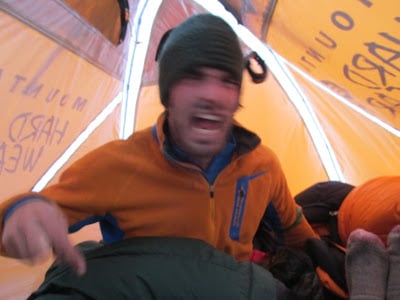
Rapper
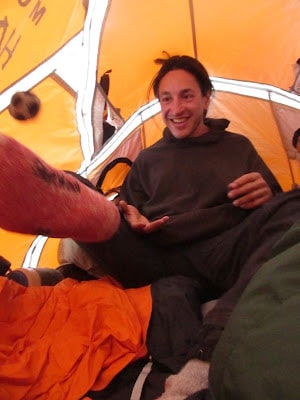
Hackie Sack

Weather Reports

Checking Weather
Day 9: Hike to the Col
Today was the first of the massive storm. Apu and Isabelle had moved to camp polacos the day before for a summit bid, which we also thought was not a good idea. I believe Apu was pressured into this decision by his client really wanting a summit-but that night they barely slept in the wind and a tent pole broke. We decided we would head up to the camp to check on them and see if they needed help with anything.
We hiked up to the col in 65 mph winds. Each step was a concentrated effort to not get blown by the wind. When we made it to the col. We met Apu and he said they had hired some porters to help them with their great. So we headed back down to camp one.

Marshmellow Man

Windy

Meeting Apu and Isabelle

Hiking in High Winds

Lift off

Looking down at our camp
We spent the rest of the day preparing for the worst. I chipped away at the ice stream to find some water, tony reinforced our rock walls and we killed time chatting with the other teams under the pounding wind. The Australians moved to camp guanacos. Arden and lei from Ayamara were overwhelmed and decided to descend to base camp and call the trip finished. They ended up making the best decision of all of us.
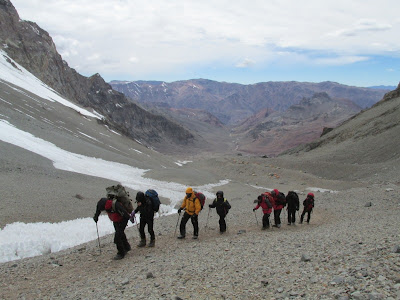
Austalians Heading up
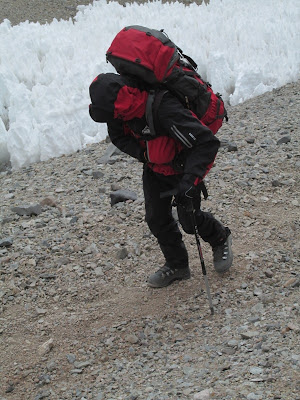
Hiking in heavy wind

Cool Camera Tricks
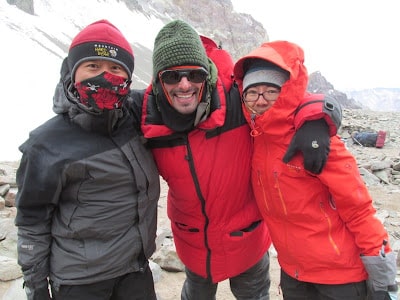
Arden and Lei before they headed down
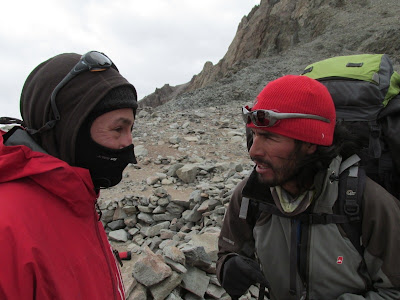
Chatting wth Apu before he headed down

Getting Water after chipping the ice
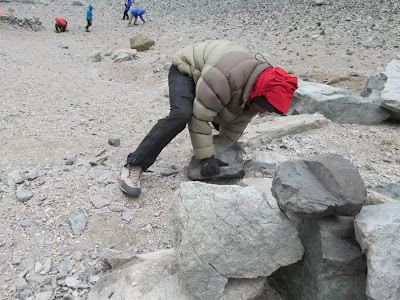
Reinforcing the walls
Day 10: The Storm
We had decided the night before that waiting out the storm would be difficult and it would be prudent to descend but still weren’t 100 percent sure. We had 6 days before we needed to be back in Mendoza and the seven day forecast had no less than 100km winds at our second camp polacos and upto 140km winds on the summit. Combine this with below zero temperatures and snow forecasts and you have a good reason to descend.

Getting the Weather
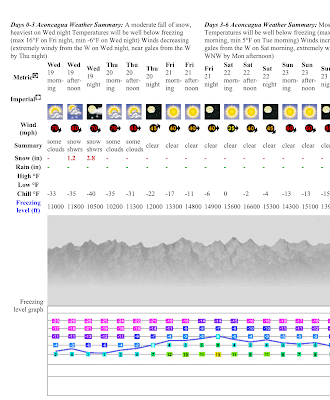
The Report at 16,500 feet
All throughout the night, our tent was being pounded by wind, shaking the entire frame. Somehow both tony and I were able to sleep soundly through the night. But this was not the case for other tents at camp. As we later found out, one tent exploded from the wind, two tents collapsed and most people had trouble sleeping with fear. We were very lucky that we had a huge boulder and a high rock wall protecting us, but we still felt the force of the storm.

Outside Early on in the storm
I woke up at 8 am to pee and the second I opened the tent door, I was greeted with a massive flurry of wind and snow. I looked around and everything was becoming white. Tony and I checked the weather report again and saw that there were seven more days of storms. We had no other options but to bail. I put on my cold boot liners with my numb hands and we boiled the frozen pot of water we had filled the day prior.

Outside the tent door
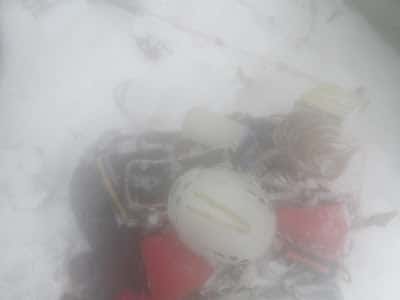
My Packpack in the whiteout
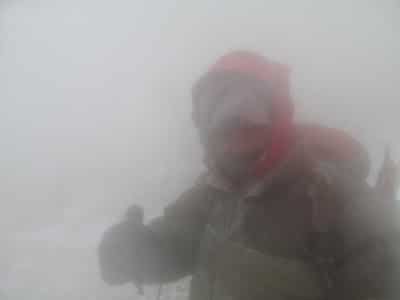
Can Hardly See Tony
We packed our bags in our tent and made a mad dash outside to finish packing and put away the tent. The winds were howling, knocking us over with each step and basking our faces with tiny particles of snow. We finally managed to pack our bags with 45 pounds of gear. We had an additional duffle bag weighing 35 pounds.

Hiking out in the storm -Photo Courtesy of Tony
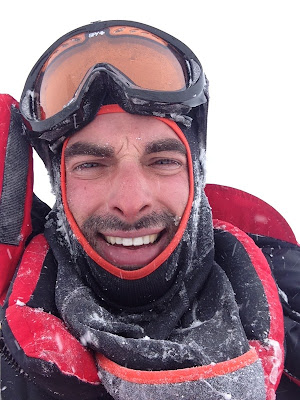
Windy -Photo Courtesy of Tony
About 100 meters from our camp, we saw an incredible site. There was a tent that had exploded from the force of the wind. Tony walked over to snap a few photos when an enormous gust of wind knocked us both off our feet. It had me clinging to a rock to maintain stability.

Exploded tent panorama – photo courtesy of Tony
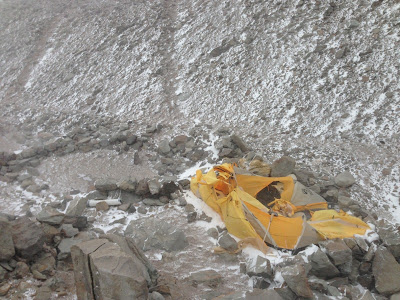
Exploded tent – photo courtesy of Tony
Because we didn’t want to make two trips back to camp 1, we decided to drag the duffle bag back to base camp. Dragging the duffle bag in 65 mile per hour winds over rocks and snow down to base camp was a bit of an ordeal. We took turns carrying the duffle bag down the hill but with tony performing much of the work. At one point he got tired of dragging it and hoisted it over his head giving himself a nice 80 pound load. We navigated in a whiteout back to base camp.
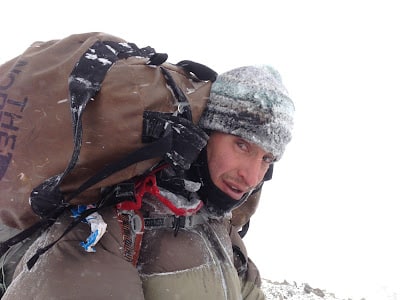
Hiking out in the storm -Photo Courtesy of Tony
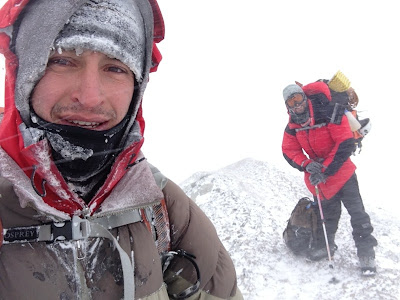
Hiking out in the storm -Photo Courtesy of Tony
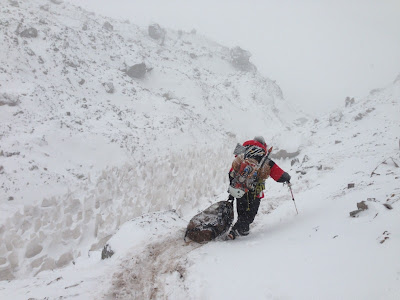
Dragging the duffle bag -Photo Courtesy of Tony
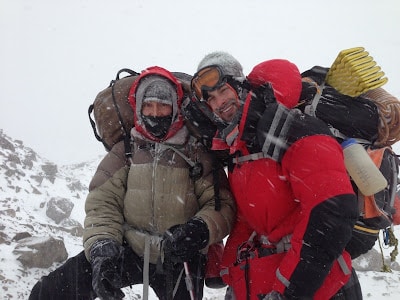
Finally some visability – Photo Courtesy of Tony

Base Camp-Photo courtesy of Tony
When we arrived, we were overjoyed but exhausted. We poked our head in the grajales tent and Griselda greater us. We were frozen to the bone, weak and even though she had no obligation, she made us soup and gave us tea. We arranged with her to rent a dinning tent for dinner that night. We spent the rest of the day warming up in the tent and were excited when dinner came. We arranged to meet curt, Maribel, Ben and Felix for a dinner. We dinned on soup, chicken, mashed potatoes, mushrooms and a custard desserts. Ben and Felix played some Christmas music. It was quite the scene. All of us in our down jackets, vapor filling the tent from our breaths and snow outside – very thematic.
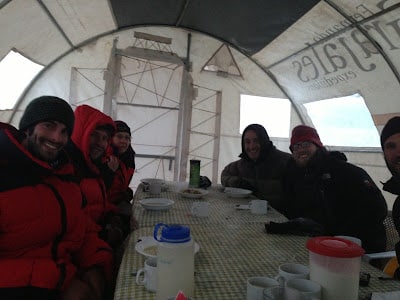
Dinner time

Yum yum Chicken
We stopped by to see the Australians who were thoroughly thrashed. They had a mini epic trying to get from guanacos camp back to base camp. One of them commented that it was the first time he had seen snow fall. I chucked to myself, what a day. Tony and I retired to the tent plunging fresh tracks in the snow on our way.
Day 10: Hike to Pampa Las Lenas
Tony and I awoke to more snow and more wind. We gave Griselda the money for dinner, a tip for being awesome and a bottle of wine to share with everyone. We left our duffles for the mules and headed off into heavy wind and snow to Pampa de Lenas. After about an hour, the snow disappeared and we traded our double boots for our hiking shoes to complete the 20 miles in 6hrs and 10minutes. We each only drank 1/4 liter of water and had a granola bar or two. We were so hungry that night that we each had two dinners.

Basecamp in the morning – photo courtesy of Tony

The hike out – photo courtesy of Tony

Almost another whiteout – photo courtesy of Tony

A very different looking sign than when we first saw – photo courtesy of Tony

Hiking out

The Mules powering through during a storm
Day 11: Final Day Hike out
We woke up early, packed up our stuff and finished the hike out. We were picked up by grajales, paid them the remainder of the balance, sold them back the unused gas cans, weighed myself (lost 9 pounds), had some lunch at a restaurant/hostel where I snuck in a shower, played futeball with some local kids and caught the bus back to Mendoza.

Pampa De Lena – photo courtesy of Tony

Looking Badass after the climb- photo courtesy of Tony

Chillin- photo courtesy of Tony

Chillin – photo courtesy of Tony

Stretching while Tony has some Coke- photo courtesy of Tony

Soccer with the kids- photo courtesy of Tony
What an amazing trip with amazing people! Later that night tony and I went out and had an amazing all you can eat dinner with some tasty vino. Our stomachs almost exploded.

Dinner at Caro Pepe- photo courtesy of Tony

More food- photo courtesy of Tony

Estas Lleno photo courtesy of Tony
My thoughts on climbing expeditions:
Climbing expeditions are a lot of work and are just as much physical as they are mental. This was my first all out expedition of more than a week. I was pretty sure that I wouldn’t enjoy the expedition style of multiple days and slowly making my way up a mountain. I am more used to climbing routes in a day. Whether the day is 8 hours or 18 hours, I tend to spend more time climbing and less time relaxing when I am in the mountains. But I wanted to give an expedition a shot and see what I thought.
There are so many logistics that go into these climbs. Flying to the country, buying mountain permits, buying food, packing and ordering donkeys – while communicating in a foreign language. This is all before you even start the climb.
However, I was pleasantly surprised that there really wasn’t as much down time as I thought. And once we started on the trail, I felt completely in my element and at ease. Granted there was time sitting around the tent waiting out storms but this was minimal in the entire scheme of things. What made the trip so fun wasn’t necessarily the mountain, but the people. Everyone that I met was so warm and friendly and shared similar values and goals. The people I met made the trip. I realized that if I am going to continue climbing big mountains that I should do everything possible to reach the top but to know that the mountain decides whether you climb it. The summit shouldn’t matter. It is the experiences I have, the people I meet and the stories I share that make the climb.
Cost off the trip:
- I had some assistance from Cliff Bar and Mountain House as sponsors that helped cut the cost; but even with that, the trip cost was about 1300 dollars each without plane ticket.
- Mid Season Permit: $750 per person
- Mules 90kg entrance: $425 split
- Mules 60kg exit: $325 split
- Private Transportation to entrance trailhead from Mendoza: $207 split
- Private transport from exit trailhead to Pentitentes: $25 split
- Bus from Pentitentes to Mendoza: $7 per person
- One Basecamp dinner meal: $40 per person
- Fuel, Wine and Food at grocery store: $250 split
Tips and Info:
- Only bring one roll of toilet paper, there are plenty of rolls in the pit toilets
- The mountain dries out your throat and ski: bring lotion and cough drops
- Two tents are nice for preliminary camps, then stash one at basecamp
- Used only 1.5 fuel canisters and didn’t filter the water, seem to be okay
- Nylon neckbands are clutch most days to block the wind
- Sandals are amazing at basecamp and preliminary camps
- Lots of people gets helicopter evacuations: hypothermia, Uti’s and acute AMS.
- Chopper evacs are free if ordered by the doc but 1800 dollars if it is not
- Having a pulse oximiter and taking it each morning with hr is a good way to monitor your status Don’t always rely on pulse ox and hr readings- clinical presentation is also important
- Brought vegetables for the first 5 days, the got lazy and had only freeze dried food
- Make sure you have clean clothes for when you return
- When climbing unsupported, it is such a treat when the guided groups invite you into their food tents
- You are given bags for high camps to pack out poo
- Take the bus to and from the trailhead…3hrs and 30minutes but $200 dollars cheaper
- Don’t try to do anything in Mendoza on a Sunday…everything is closed
- Bring extra American dollars with you to base camp…the peso exchange rate sucks
- Use BIG rocks to stake down your tent. Stakes don’t work and will cut your cord in wind.
- Get the best possible campsite even if it means leaving early. You won’t regret.
- Hike to plaza in three days to acclimatize but out in one or two.
- Have fun and enjoy every minute..it is likely you will only experience it once
- Only three people have summited so far this season from the Polacos side of the mountain
Tragedy:
A few days after we got off the Mountain and were back in the States, tragedy struck. Two Americans died while attempting Polish Direct. My heart goes out to their families.
http://www.mercurynews.com/nation-world/ci_22296667/two-u-s-climbers-die-argentinas-aconcagua
- Disclaimer – The content here is designed for information & education purposes only and the content is not intended for medical advice.


